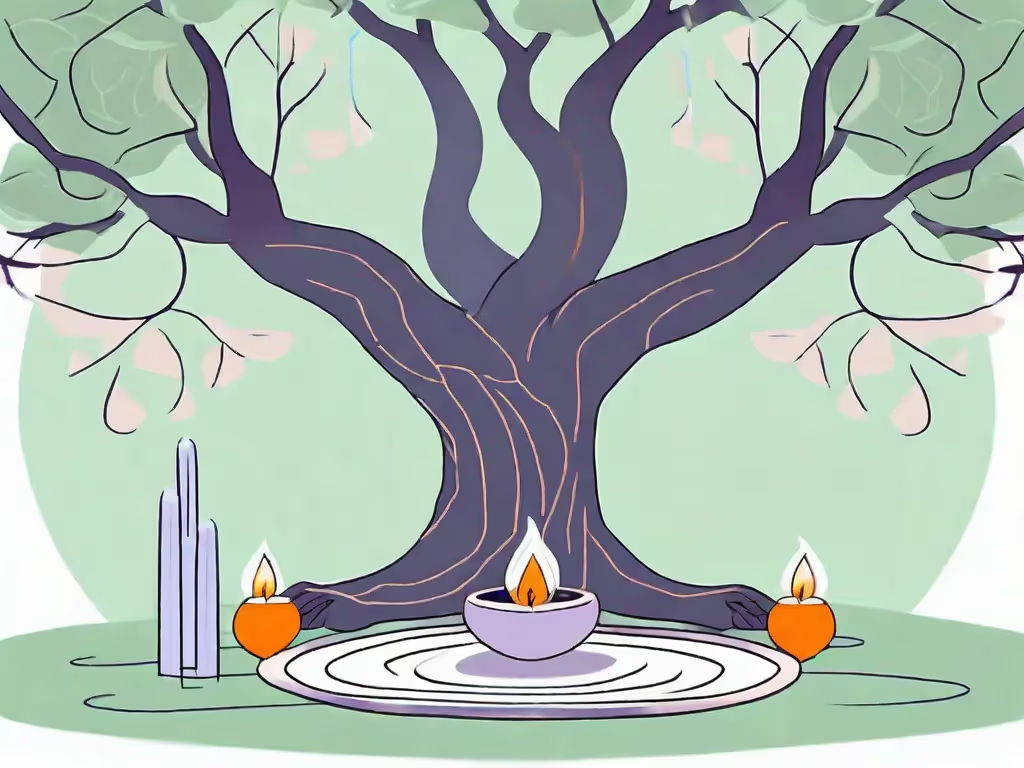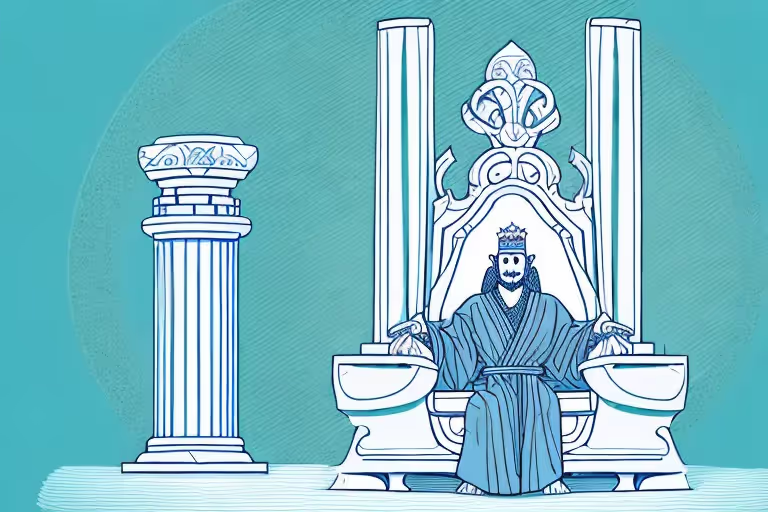In today's fast-paced world, many people are turning to meditation as a way to find inner peace and improve their overall well-being. As the demand for meditation continues to rise, so does the need for skilled meditation teachers. If you have a passion for meditation and a desire to help others, becoming a meditation teacher could be a fulfilling path for you. In this step-by-step guide, we will explore the basics of meditation, how to prepare yourself as a teacher, and how to develop and deliver effective meditation classes.
Understanding the Basics of Meditation
Meditation is a practice that dates back thousands of years and has roots in various cultures and traditions. At its core, meditation is a technique that involves focusing your attention and eliminating the stream of thoughts that often dominates our minds. By doing so, you can experience a deep sense of stillness and tranquility.
Meditation offers numerous benefits for both the mind and body. Research has shown that regular meditation practice can reduce stress, promote emotional well-being, improve focus and concentration, and even enhance physical health. Despite these benefits, there are still some common misconceptions about meditation that we will explore.
Aura has the world’s largest and best collection of Meditations and hundreds of Coaches to choose from.
Try it Free!
What is Meditation?
Meditation is often misunderstood as a practice of emptying the mind or achieving a state of complete bliss. However, the true essence of meditation lies in cultivating awareness and acceptance of the present moment. It is about observing your thoughts and emotions without judgment, allowing them to come and go without getting caught up in them.
The Benefits of Meditation
The benefits of meditation extend far beyond just relaxation. Regular meditation practice can help reduce anxiety and depression, improve sleep quality, increase self-awareness, and boost overall mental well-being. Research has also shown that meditation can have positive effects on physical health, such as lowering blood pressure and strengthening the immune system.
Common Misconceptions About Meditation
Despite the growing popularity of meditation, there are still some misconceptions that prevent people from fully embracing this practice. One common misconception is that meditation is only for spiritual or religious purposes. In reality, meditation can be practiced by anyone, regardless of their beliefs or affiliations.
Another misconception is that meditation requires a significant time commitment. While it is recommended to have a regular meditation practice, even just a few minutes a day can make a difference. It's all about finding what works best for you and incorporating meditation into your daily routine.
Preparing to Teach Meditation
Before you can guide others on their meditation journey, it's important to prepare yourself as a meditation teacher. Here are some essential qualities to cultivate and steps to take:
Essential Qualities of a Good Meditation Teacher
Being a good meditation teacher goes beyond just having knowledge about the practice. It requires qualities such as empathy, patience, and the ability to create a safe and supportive environment for your students. Cultivating a regular meditation practice yourself will also help deepen your understanding of the practice and enhance your ability to guide others.
Understanding Different Meditation Techniques
Meditation is a vast field with various techniques and approaches. As a meditation teacher, it's important to have a solid understanding of different meditation techniques, such as mindfulness meditation, loving-kindness meditation, and body scan meditation. This will allow you to tailor your teachings to the needs and preferences of your students.
Getting Certified as a Meditation Teacher
While not mandatory, getting certified as a meditation teacher can help you gain credibility and deepen your knowledge and skills. There are various meditation teacher training programs available, both in-person and online. Research different programs and choose one that aligns with your goals and values.
On the other hand, if you prefer a more self-study approach, there are also plenty of resources available, including books, online courses, and workshops. It's essential to continue learning and expanding your knowledge even after you become a certified meditation teacher.
Developing Your Meditation Curriculum
As a meditation teacher, you will need to develop a curriculum that caters to the needs and interests of your students. Here are some key aspects to consider:
Structuring Your Meditation Classes
A well-structured meditation class will help create a sense of flow and progression for your students. Start with a brief introduction to meditation and its benefits, then gradually lead into guided meditation sessions. You can also incorporate time for self-reflection, group discussions, and gentle movement exercises to enhance the overall experience.
Incorporating Mindfulness into Your Teaching
Mindfulness, the practice of being fully present in the moment, is closely related to meditation. Incorporating mindfulness exercises into your teaching can help deepen your students' meditation practice and enhance their ability to bring mindfulness into their daily lives. Teach them how to cultivate mindfulness during everyday activities, such as eating, walking, or even brushing their teeth.
Adapting Your Teaching Style to Different Audiences
As a meditation teacher, you may encounter students with different backgrounds, needs, and preferences. It's important to be adaptable and adjust your teaching style accordingly. For example, if you are teaching in a corporate setting, you may focus on stress reduction and work-life balance. In a school setting, you may emphasize the importance of mindfulness in academic performance.
Teaching the Basics of Meditation
Now that you have prepared yourself and developed your curriculum, it's time to start teaching the basics of meditation to your students. Here are some essential elements to cover:
Guiding Your Students Through Their First Meditation
The first meditation experience can be both exciting and intimidating for your students. Start by creating a welcoming and comfortable space for them. Begin with a brief explanation of what to expect during the meditation session, such as the importance of posture and focusing on the breath. Guide them through a simple meditation technique, allowing them to experience the benefits firsthand.
Teaching Proper Breathing Techniques
Breathing is a fundamental aspect of meditation. Teach your students different breathing techniques, such as deep abdominal breathing or counting the breaths. Help them understand the connection between the breath and the mind, and how conscious breathing can help calm the mind and deepen their meditation practice.
Helping Students Find Their Meditation Posture
Comfortable sitting posture is essential for a successful meditation practice. Teach your students different seated positions, such as cross-legged on a cushion or sitting on a chair with their feet flat on the ground. Encourage them to find a posture that feels both comfortable and stable, allowing them to relax and focus their attention inward.
As a meditation teacher, you have the power to positively impact the lives of your students. By guiding them on their meditation journey, you can help them find peace, clarity, and a deeper connection with themselves. Whether you choose to teach meditation as a career or as a way to give back to your community, remember that your own practice and continuous learning are key to becoming an effective and inspiring teacher.
Are you interested in exploring meditation and its benefits further? The Aura Health app offers a variety of guided meditations, mindfulness exercises, and sleep stories that can support you on your meditation journey. Download the Aura Health app today and unlock a world of peace and well-being.
Aura is Your All In One App for Meditation, Mindfulness Wellbeing
Find peace every day with one app for your whole well-being. There is no one-size-fits-all solution to mental well-being. Aura is the first all-in-one wellness app that learns how to best help you. Discover an endless library of expert-created tracks for your well-being, all taught by the world’s best coaches, therapists, and storytellers. With Aura's personalized recommendations, you can find peace every morning, day and night.



.webp)






.avif)

%20(1).avif)


.avif)
.avif)
.webp)


.avif)


















































































































.avif)

















.svg)









